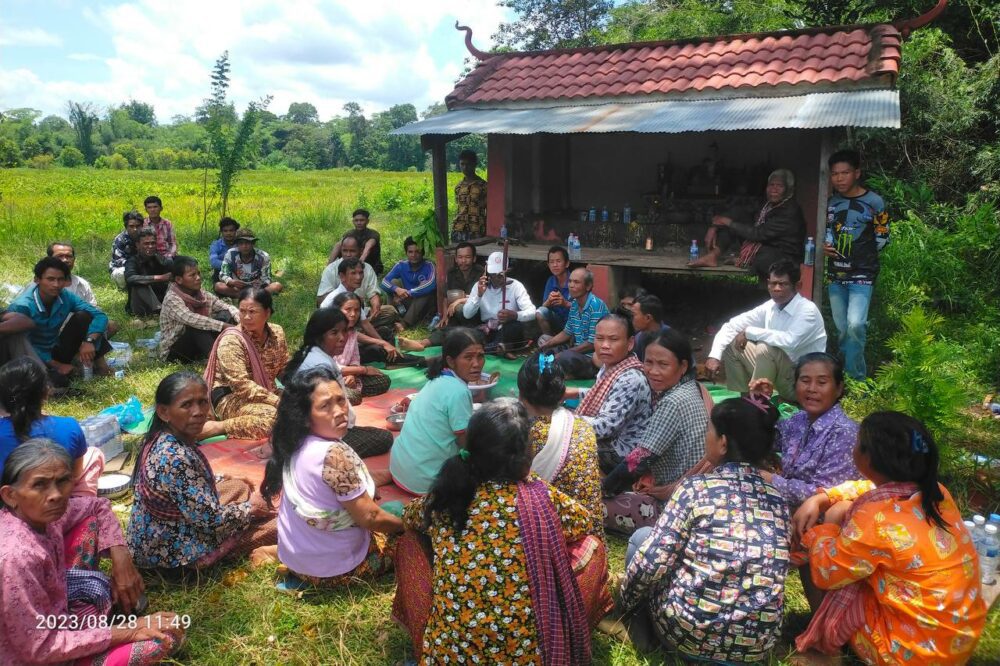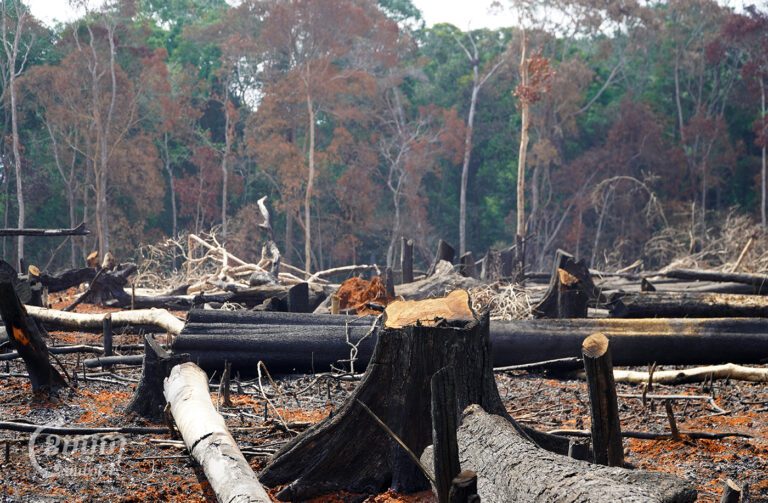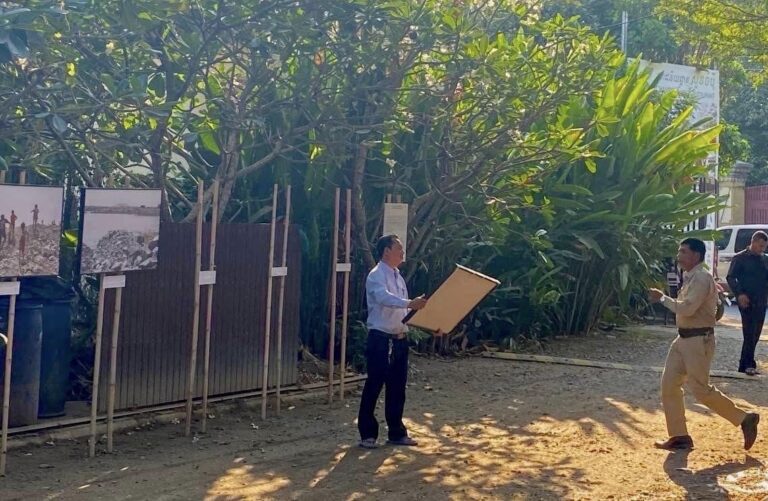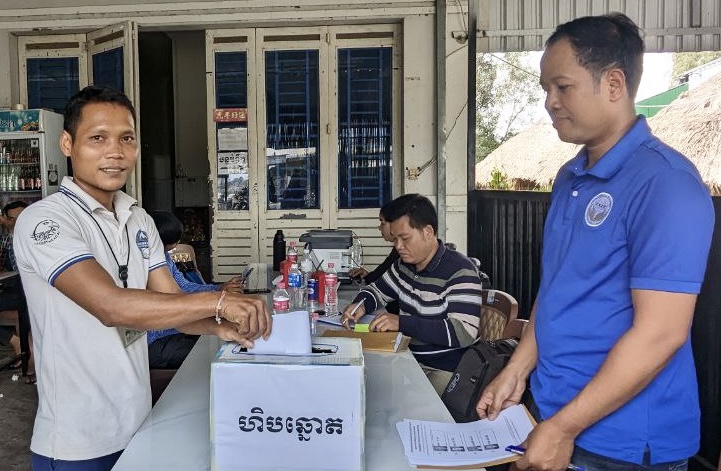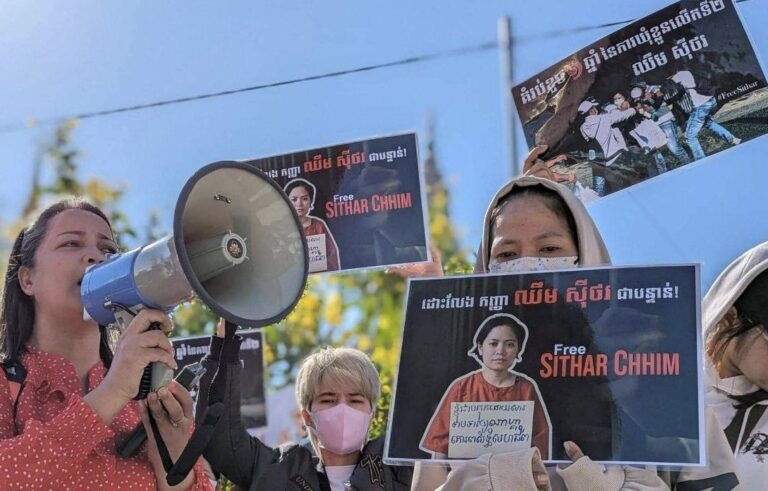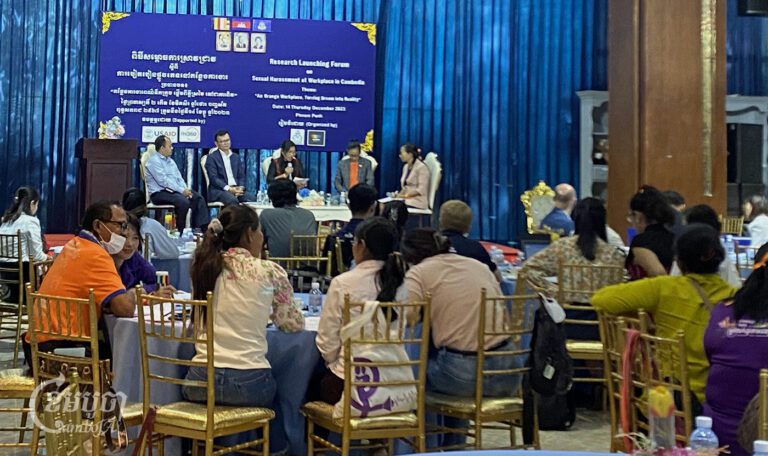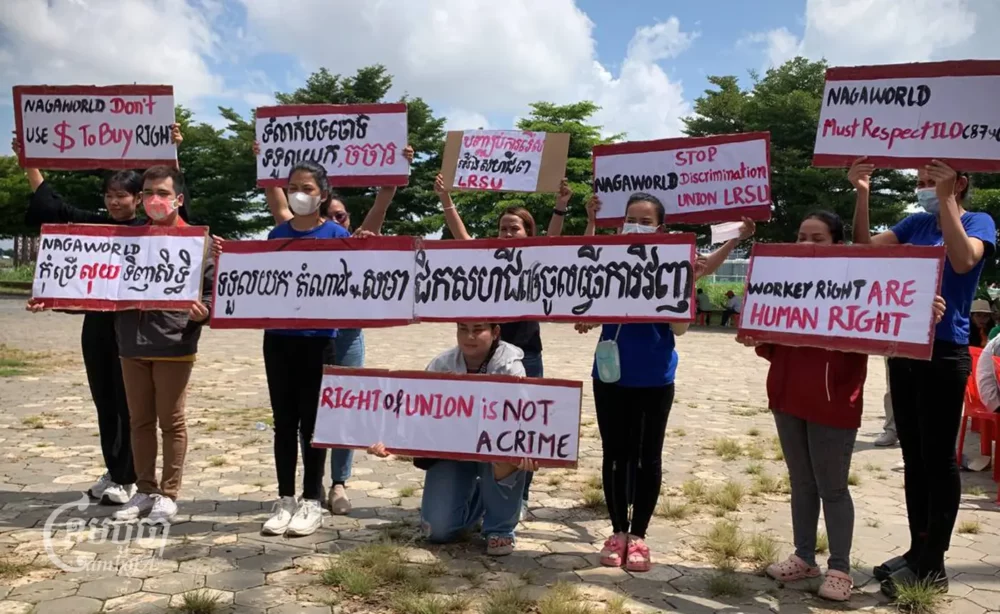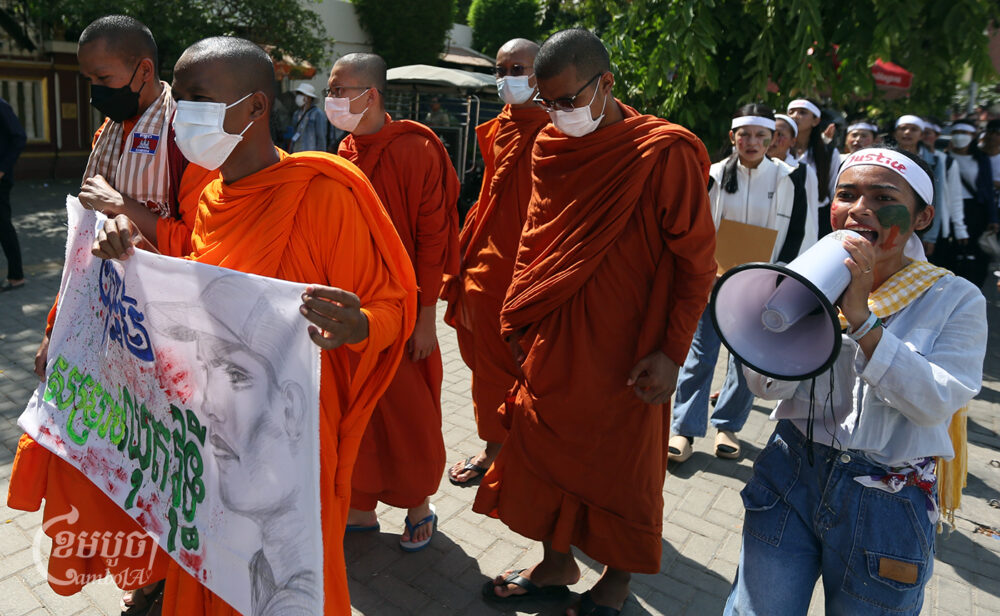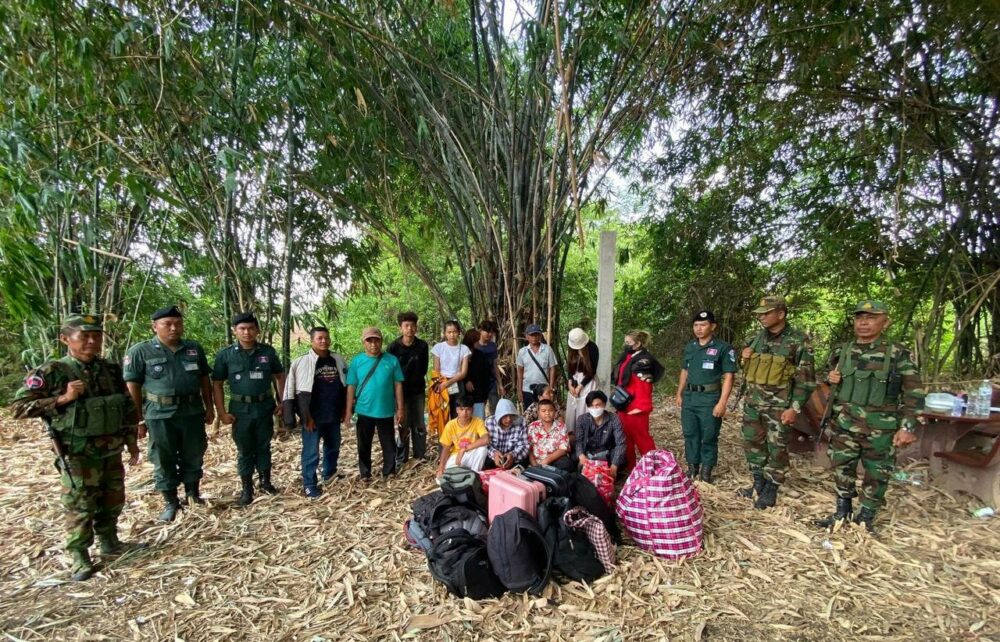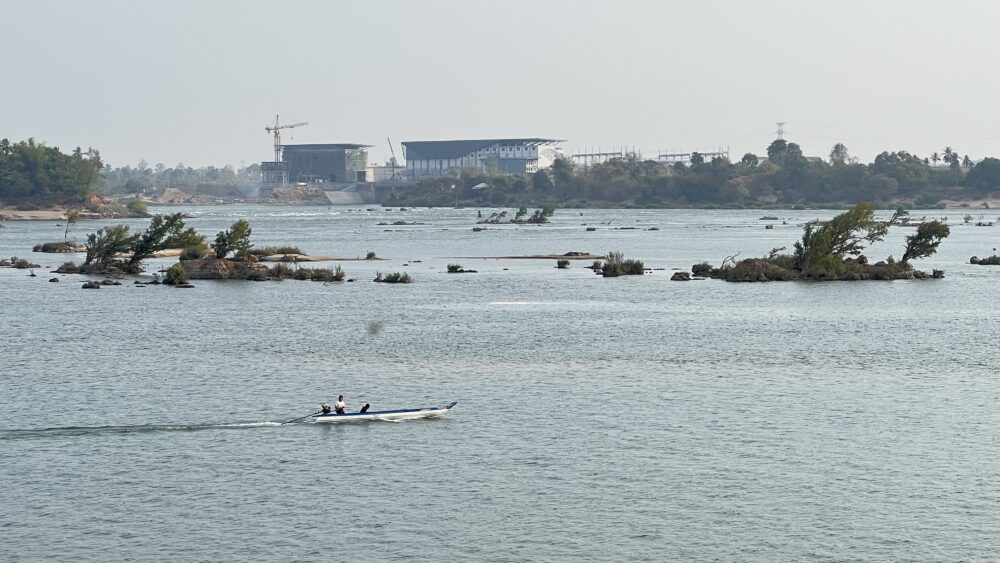Kuy indigenous peoples in Preah Vihear province’s Chheb district invoked ancestral spirits and held a “curse ceremony” to hex powerful people, including department of environment officials who they say are violating their land rights.
“We are facing difficulties, there are some powerful people who are encroaching on our land,” a group of around 50 Kuy people chant in a video of the ceremony posted on Facebook on August 28. “If any powerful person still abuses, please, Lok Ta Dang Plet, Lok Ta Treb, [spirits] break their necks. If they come by water, let the boat sink; if they come by land, let the car overturn; and if they come by plane, let it crash.”
The ceremony occurred soon after environment officials barred some Chheb II commune residents from farming on customary lands in the Preah Roka Wildlife Sanctuary, according to community members and a civil society official who spoke to CamboJA.
The Director of the Preah Vihear Provincial Department of Environment, Song Chan Socheat, told CamboJA that his department indeed planned to build a stable and pasture to breed cows for officials’ families, adding indigenous peoples had no right to prevent officials’ from doing so.
“They do not want us to build. It is land in the conservation area; why cannot we build?” Socheat said. “The cow stable is small, not big.”
However, he admitted he was not sure of the exact size because the stable and pasture had yet to be constructed.
Community members say they went into the forest in mid-August to try to remove wooden planks being used to construct the stable.

An indigenous Kuy commune resident, Som Nay, said the provincial environment department officials had taken around 20 hectares of land overlapping with areas customarily used by community members.
“For me, the difficulty with the Environment Ministry is that it is hard for people to farm and use the natural resource by-products,” Nay said. “People are afraid to even go to their farm. What people want is for them not to build the cow pasture and keep it [the land] for the next generation.”
Nay and others said that since the Environment Ministry arrived in the area in 2018, indigenous peoples had suffered more. They say they have been using the land since before the protected area was created in 2016.
Another Chheb II Kuy representative, who requested anonymity, said that environment officials had previously tried to build a stable for cows in the protected area last July but around 100 community members dismantled it. Officials told them they had asked permission from the Environment Ministry to build inside the protected area but community members say they were never informed in advance.
“They can expand everywhere they want, but please avoid the area where people farm,” he said. “Please, Environment Ministry, we hope to understand the culture of indigenous people.”
New Environment Minister Eang Sophalleth could not be reached.
According to recent subdecrees, more than one million hectares across 13 provinces have been expanded, integrating biodiversity corridors established in 2017.
The Kuy representatives said they also submitted a complaint to Preah Vihear’s provincial governor several weeks ago about the expansion of protected area boundaries but have not yet received a response.
Preah Vihear Provincial Governor Kim Rithy could not be reached for comment.
Phav Chhoeun, Dang Phlet village chief, confirmed to CamboJA that it is true that the Environment Ministry did not allow people to farm or go to the forest to harvest natural products.
“It is a wildlife sanctuary area, and they [the Environment Ministry] said they are the defenders. People were not allowed to farm,” he said. “It is true that the Environment Ministry threatens people not to farm; if they do, they will be arrested and sent to prison.”
Chheb II Commune Chief Chhean Chen said 10 families are farming on the contested land and that local authorities had not authorized environment officials’ to build a cow stable and pasture in a wildlife sanctuary.
“They did not demarcate the land, so we did not know because it is in the wildlife sanctuary and they informed us later,” he said. “People do not agree; they ask to withdraw this project.”
He noted that before the Environment Ministry took control of the area in 2018, people practiced traditional rotational farming but they have since not been allowed to farm inside the sanctuary.
“On behalf of local authorities, it is hard; one side is law and another is people; we don’t know what to decide,” Chen said.
Indigenous Kuy in Chheb II commune do not have communal land titles to recognize their customary land claims in the area, while others lack any kind of land title.
However, Chen said he hopes that the last November’s sub decree 245, intended to establish community zones and provide land titles across nearly one million hectares of protected areas, will allow indigenous people to receive recognition of their land rights. But a new environmental code, consolidating conservation laws and passed earlier this year, removes the term “indigenous” and replaces it with “local communities,” drawing concerns from indigenous rights groups that their land claims will be further diluted.
Kuy people in Preah Vihear have previously placed a curse on a Chinese developer blocking their farmlands. Last month, in Kratie province, indigenous Kraol community members burned down an Environment Ministry station after officials allegedly prevented them from accessing their farmlands following the recent expansion of a protected area.


